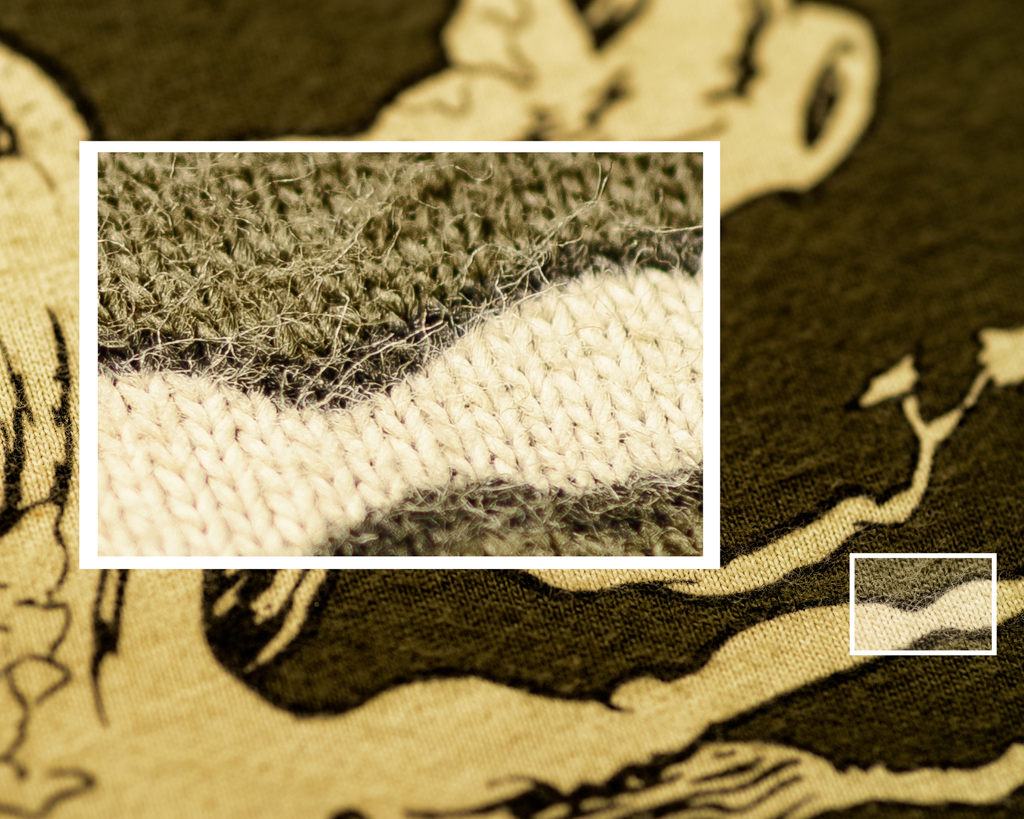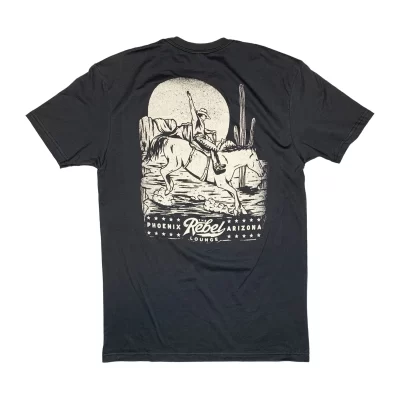Discharge Printing
Wuzzat? Dis-WHAT?!
Discharge inks use a chemical process to neutralize the dye in the fibers of garments and replaces it with a new color (or leaves the natural color of the cotton if no color is added). It’s a clean, soft, breathable print.
But there are some important things to consider…
The CliffsNotes (SparkNotes to the kids):
- Discharge inks can give unique color results each time and are relatively imprecise.
- All shirt colors from all manufacturers discharge differently.
- Discharge inks only affect the cotton fibers of a garment, not poly or rayon.
- Shirts won’t feel ‘ink-free’ until washed, and colors can lighten slightly after the first wash.
- The pricing for discharge printing is a little higher, but in some cases can actually save you money (see below).


The Novel:
Discharge inks usually come out without issues but there are a few things you should know…
- Printing with discharge ink is imprecise and somewhat unpredictable. The colors can vary, giving unique results with each print run. Since discharge inks are chemistry in action, they’re one shade when they’re mixed, another shade once they’ve been printed, yet another once they’re cured & dried, and sometimes just slightly lighter after they’ve been washed for the first time.
- Because of the inherent variation of colors with discharge inks, we don’t offer Pantone/PMS matches. We can still mix a color but don’t expect a match as it will inevitably vary. We can only get it close.
- All shirt colors from all manufacturers discharge differently. The print on a black tee from one manufacturer will often look a little different from the print on a black tee made by another.
- Even two of the same shirts from the same manufacturer will discharge slightly differently sometimes depending if they were made in the same batch. This is especially true of black shirts since some manufacturers will mix their leftover dyes to make black dye, or ‘over-dye’ color shirts black when they need more black shirts fast. So if they over-dye red shirts with black dye and we discharge the shirts, the print could have a bit of a pink tint. This is uncommon but has happened to us more than once.
- Discharge inks only work ‘correctly’ on cotton fibers. Shirts with some polyester and/or rayon will get a salt and pepper, variegated kind of effect that is more pronounced as the cotton content is reduced. This is a pretty cool effect that we often use on purpose.
- Some shirt colors just don’t discharge well. Royal blue and Kelly green are hopeless. They just don’t discharge. The only way to get a color that’s close to what you’re looking for on Royal or Kelly is to combine a discharge white underbase with thinned plastisols on top, and you’ll still be able to feel it. Sorry.
- Though discharge inks cost more due to their fickle nature, there are cases where it can save you money. White plastisol ink on a black shirt would need two screens (an underbase and a highlight) for a bright white, which would cost more than a single screen of discharge white.
- Discharged shirts usually won’t feel ‘ink-free’ until washed, and colors could lighten slightly after the first wash, so you could wash them before selling or giving out if that’s a concern to you. Most people don’t notice or care, honestly.
- In theory, discharge prints can cause skin irritation if worn before being washed. But in the 20 years we’ve been printing with it, we’ve never heard someone say that. Not a-once.
Having said all that, discharge printing usually comes out without issues and is a well worth the effort. The soft, breathable print looks and feels great. Have at it!






